Having never seen, or at least not knowing, about German cinema I found Run Lola Run entertaining. The first thing that caught my eye was the soundtrack. My children introduced me to Techno music a couple of years ago, and I love it. This film is full of Techno music that draws you in and flows well with the images. Images of Lola running past empty lots, weed infested sidewalks, empty streets, then new opulent buildings. Lola’s bright hair color, techno music and even the way she dresses gives you a picture of pop culture. This pop culture undertone is in sharp contrast to the romantic tones. Manni, as the reading suggest, is infantile in nature and dependent on Lola to make his world right. Lola takes on the role of provider, guardian, and champion. This role is in contrast to the normal world and the world that the director has portrayed for Lola. The Barbie and Ken dolls in the movie along with all the pictures and what appear to be souvenirs show a soft femine side to Lola. Childhood dreams perhaps. The movie is an endless spiral of images, music, and story line that is forever spinning. IN one of the first scenes we see Manni in the phone booth and the words “Spirale” are on a building behind him. It’s as if the director is warning us to hold on, because things are about to Spiral out of control. The camera work is constantly moving, different angles and lots of juxsupositioning, which helps to keep the action moving but without boring you. The cartoon scenes at the beginning of each “run” also tells a story. In the reading I found this statement on the mark. “The Cartoon launches the viewer into a fantasy world in which anything is possible…”

I found the facial expressions on Lola, played by actress Franka Potente, to be amazing. Her silent stare at the various individuals throughout the movie were award winning. Her blank stare at the security guard, aka father, told a story in itself. You saw her emotions with a blink of the eye. I enjoyed Franka’s performance very much.

The historical undertones in Run Lola run are evident from the beginning. In the very beginning we hear how a taxi driver took her to Grunewalk Street in East Berlin. Manni was at Grunewalk Street in West Berlin. “The mix-up reflects a postunification confusion owning to the divide that still exists between the eastern and western parts of Berlin.” The reading opened my eyes to the fact that she ran past several important buildings and/or locations such as the Garnision Cemetery and the Gendarmenmarkt in East Berlin, Oberbaumbrucke (a former border crossing), Friederichsstrasse and Kochstarasse in West Berlin. These are both border crossing locations as well. Now that I know the significance of these locations I want to go back and rewatch the movie to see the angles of the camera and the speed. It makes we wonder if they have significance as well.
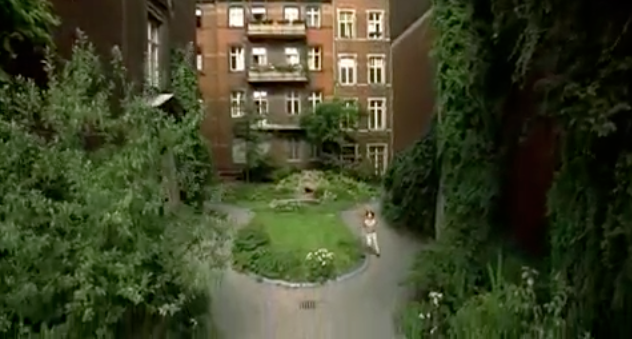
This film is a magical ride of sight, sound and emotions that tells three stories in one movie at a lightening pace. And within this movie within a movie it tells the strife of Germany and their near desperate attempt to reconcile the East and West, as well as their past. Some will see all the political and social undertones to the movie. I chose to just enjoy the movie for its entertainment factor.

**************
I originally chose to take this course, “History of Motion Pictures” for three reasons. 1) It fit into my work schedule. 2) I needed a Liberal Arts. 3) Professor Schlegel was recommended by fellow students and co-workers. However, I received more than 4 credits in Liberal Arts. I received a whole new appreciation for the motion pictures and the industry.

Back in high school (1980s) I did a report on Thomas Edison and I credited him with the first motion picture, when I really should have credited him with the first public presentation of motion picture. Of course, Thomas did build the Black Maria, the first studio, so I guess I wasn’t completely wrong in high school. J
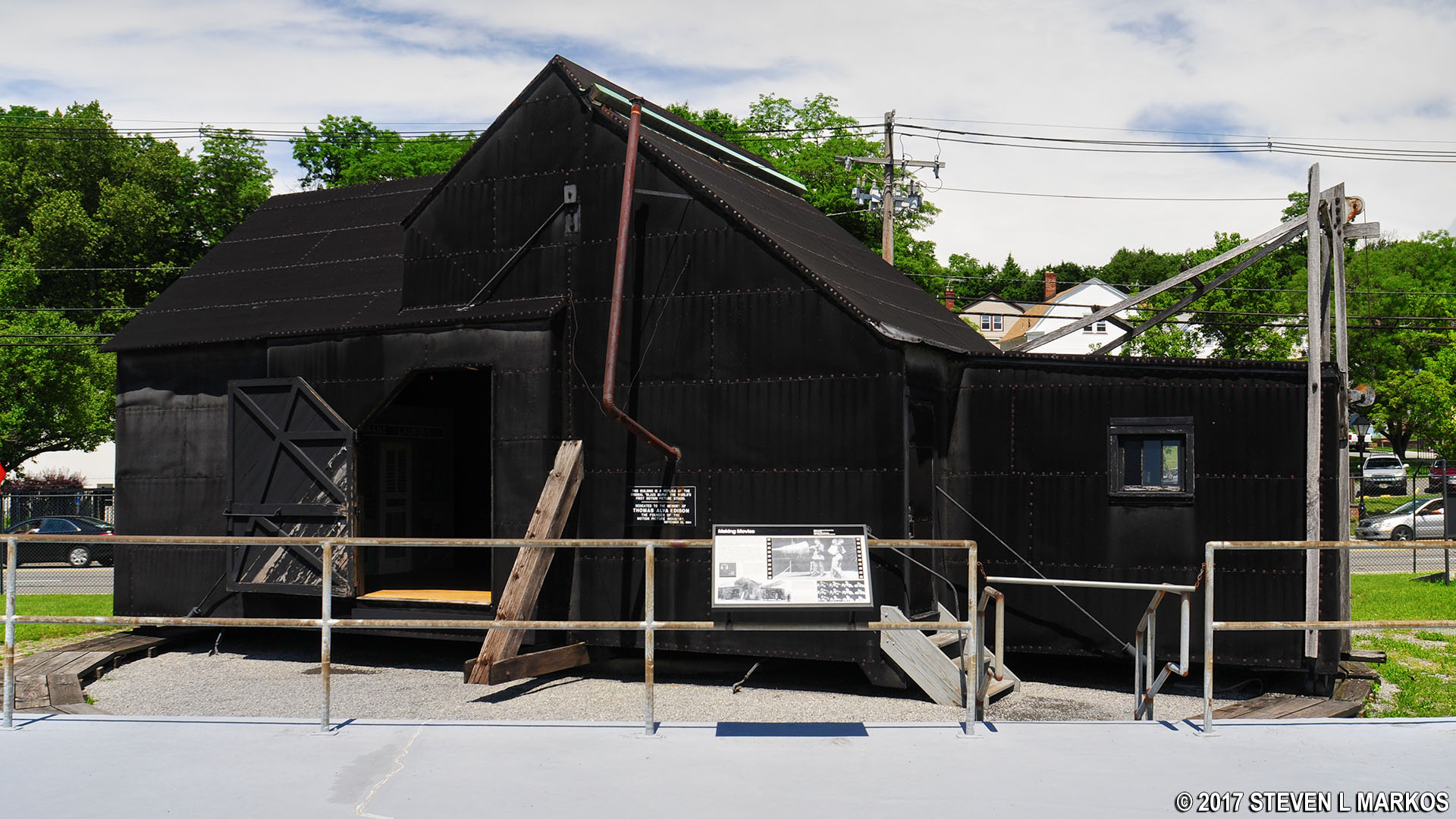
I had seen Disney’s History of Animation before class and I could very easily watch it again and again. This documentary does a wonderful job of giving the history of the beginnings of animation. I also liked the documentary on Industrial Light and Magic. ILM explains all about the start of the company, growth and impact on the industry. Where Disney does this with quiet reverence ILM is flashy, comedic and makes you want to keep watching. I never realized how influential ILM and special effects are in the films until this documentary. The amount of special effects used in one of my favorite movies, “Forrest Gump” impressed me. I now find myself looking and trying to figure out what is real, models or CGI. Thank you ILM for keeping me on my toes and guessing. ILM is truly an innovating and reinventing company revitalizing an old medium.
This class also gave me a better appreciation for silent films. I still wouldn’t watch one unless I had to, but I know have a better understanding of the magnitude they had on society and more importantly the work needed to make one. I previous viewed silent films as just these visually dark movies where the actors over exaggerated their facial expressions. This class made me realize that the scenery, sets, lights, music, camera angles, actors’ expressions and movements are all for dramatic effect. I would never have noticed the size of items, the angle of the camera, or the lightening before this class.
I think everyone should see Singing In The Rain to truly appreciate the lengths, trauma, and life changing atmosphere Hollywood was when going from silent films to Talkies. I have never liked musicals but Singing In The Rain is worth it for story line alone. Also, you should see any of the Universal Horrors as I feel they have a strong German influence with their dark sets, shadows, and lights. I like to think about a young kid in a movie theater for the first time watching, and how scaring that must have been.
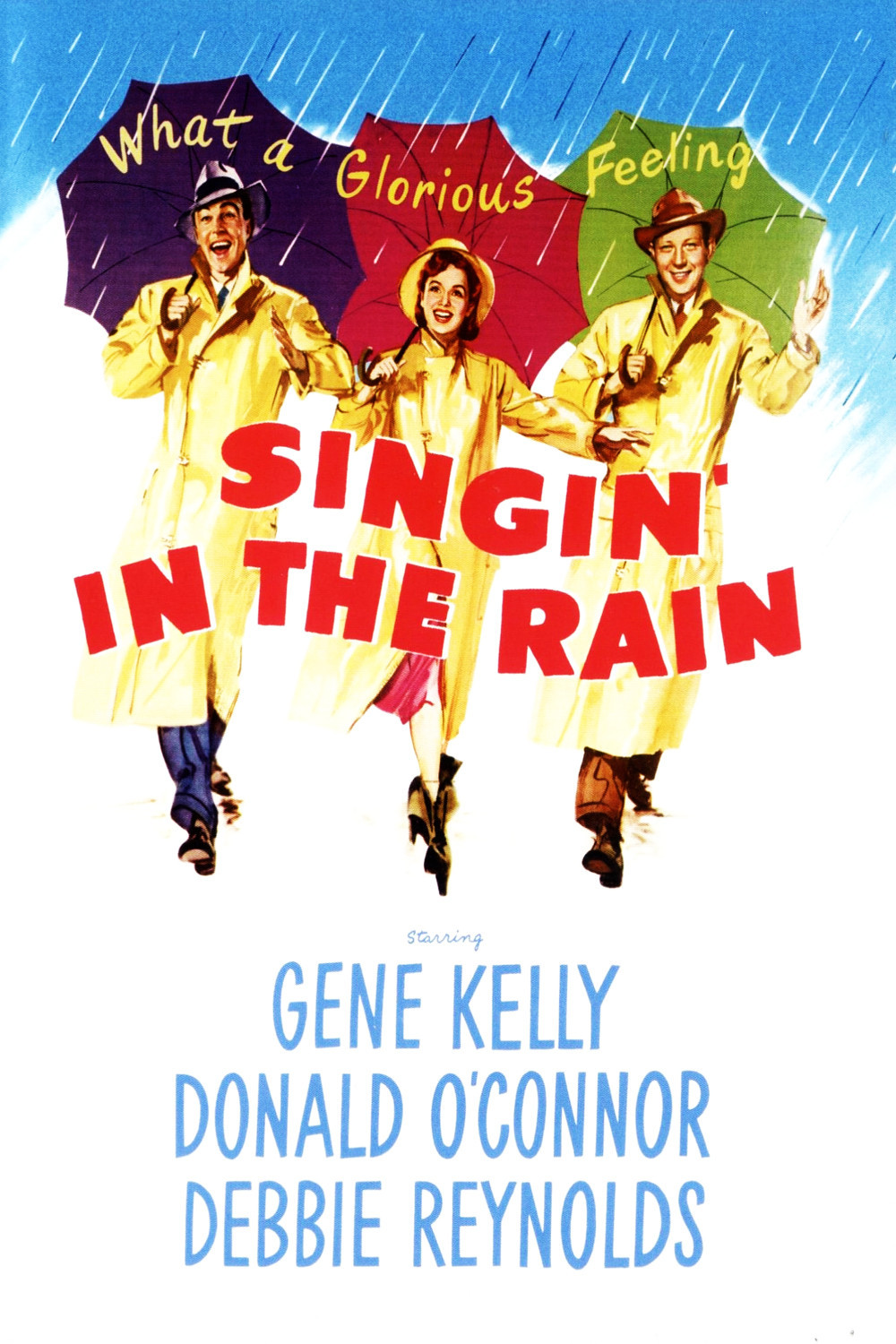
This course gave me a greater appreciation for all things Motion Picture related. I believe that although motion pictures have evolved over time to something amazing and entertaining, they are losing some of their appeal. How many car chases, throat slashing, teenage sex scenes can we watch and be entertained? Yes, I have watched all the Avenger movies, however with each movie I am slightly more disenchanted. The bottom line….I love movies and thanks to History of Motion Pictures I can appreciate them much more but also expect more out of them.






 Let’s be honest here…. The Rocky Horror Picture Show is about sex, sexuality and being a parody for many genres of Hollywood. It runs the gambit of all things sexual…from the virgin, a sexual predator, bi-sexual actions, and of course the guilt involved with all of it. It is a parody of science fiction, musicals, and horror films. I think most everyone noticed the huge sex symbols. It starts with the virginal Janet who turns into a “touchy, touchy, touch me” and sleeps with two different men in one night. Dr. Frank and his rainbow corset do not need any explanation. He likes sex and it’s obvious. The straight and narrow Brad who allows Dr. Frank to give him oral sex. The levers in the lab that look like phallic symbols. And all the references and actions of sex. The birthday hats on the party goers. There were multiple rainbow references. Dr. Frank’s corset is full of rainbow rhinestones. Columbia’s shorts are rainbow. The liquid poured into the tank in the lab were rainbow colored. Even the party goers vest were multiple colors. And considering the rainbow flag didn’t gain in popularity until after 1978, it makes you wonder if perhaps the Rocky Horror Picture Show was just ahead of its time.
Let’s be honest here…. The Rocky Horror Picture Show is about sex, sexuality and being a parody for many genres of Hollywood. It runs the gambit of all things sexual…from the virgin, a sexual predator, bi-sexual actions, and of course the guilt involved with all of it. It is a parody of science fiction, musicals, and horror films. I think most everyone noticed the huge sex symbols. It starts with the virginal Janet who turns into a “touchy, touchy, touch me” and sleeps with two different men in one night. Dr. Frank and his rainbow corset do not need any explanation. He likes sex and it’s obvious. The straight and narrow Brad who allows Dr. Frank to give him oral sex. The levers in the lab that look like phallic symbols. And all the references and actions of sex. The birthday hats on the party goers. There were multiple rainbow references. Dr. Frank’s corset is full of rainbow rhinestones. Columbia’s shorts are rainbow. The liquid poured into the tank in the lab were rainbow colored. Even the party goers vest were multiple colors. And considering the rainbow flag didn’t gain in popularity until after 1978, it makes you wonder if perhaps the Rocky Horror Picture Show was just ahead of its time.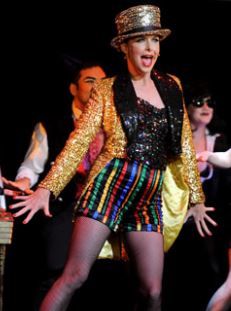
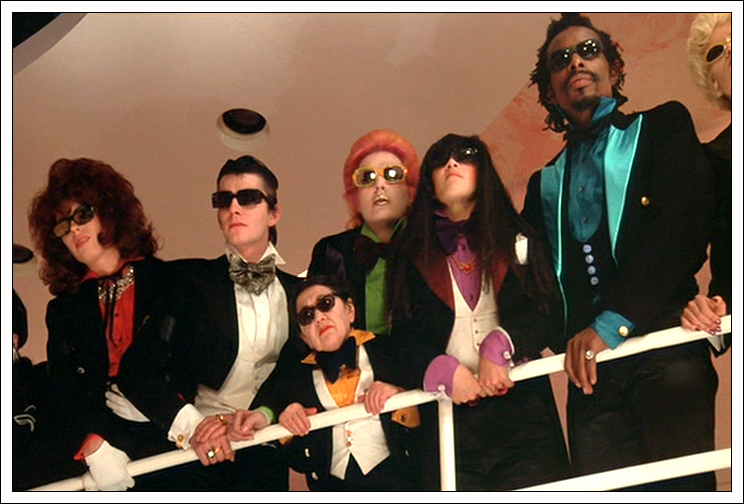

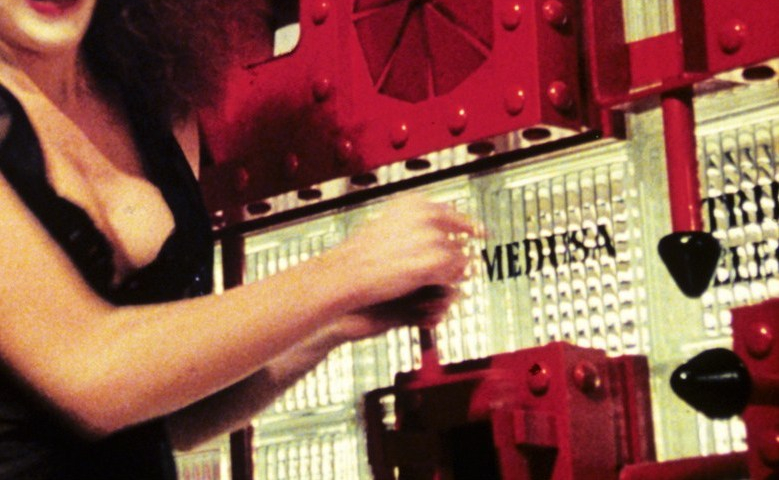
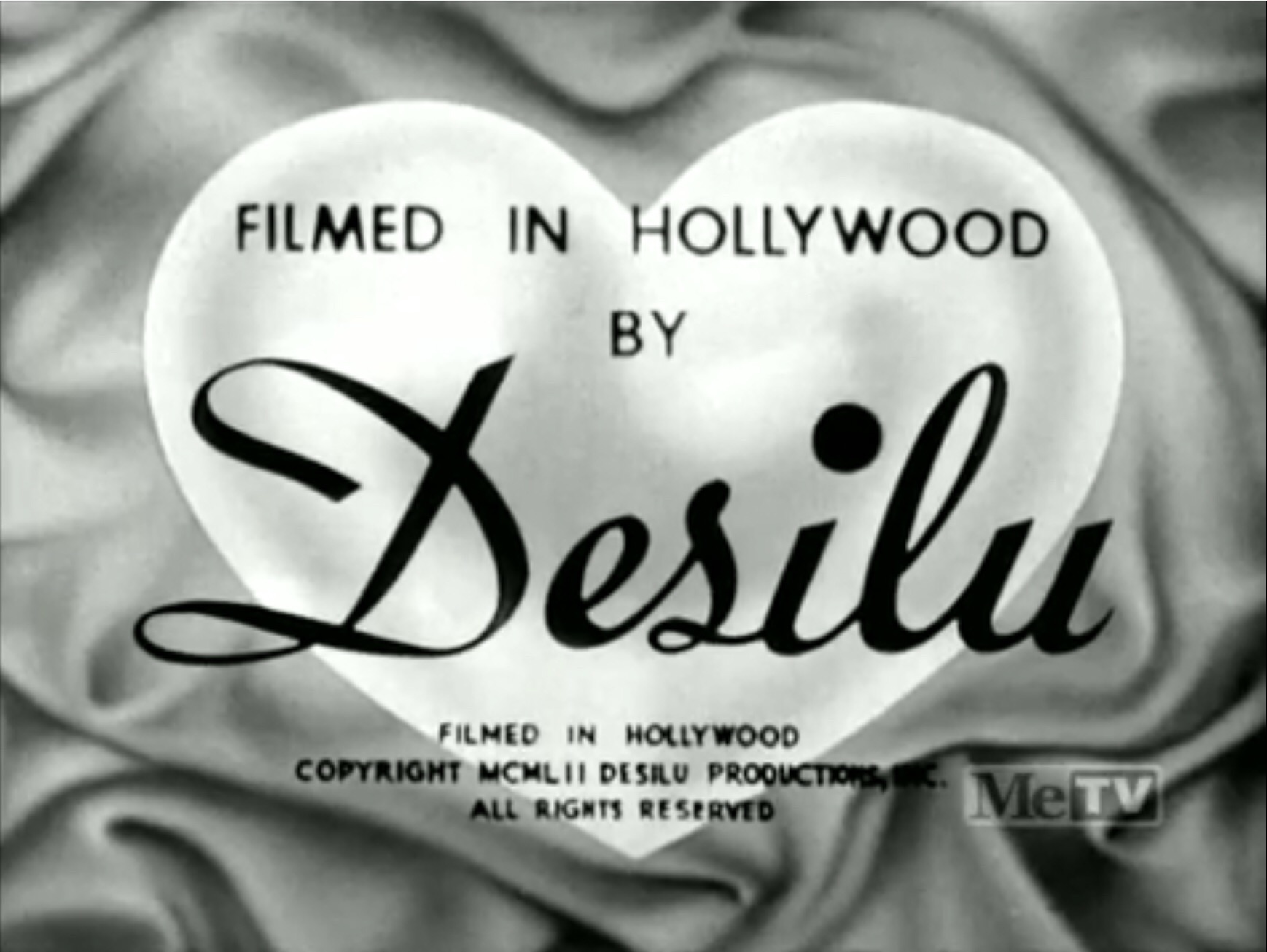

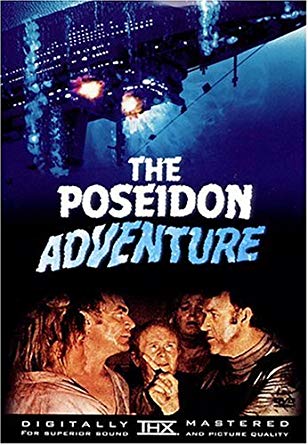
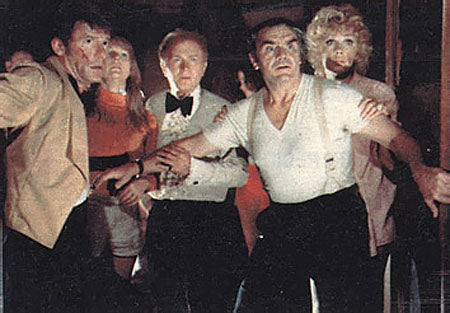


 A few minutes later, as she and Clyde are walking down the street there is no music, just a ticking noise in the background. This is making the scene tense and a feeling like something more is going to happen. Later, the scene of Clyde and Bonnie drinking from a soda bottle, is meant to be sensual.
A few minutes later, as she and Clyde are walking down the street there is no music, just a ticking noise in the background. This is making the scene tense and a feeling like something more is going to happen. Later, the scene of Clyde and Bonnie drinking from a soda bottle, is meant to be sensual. 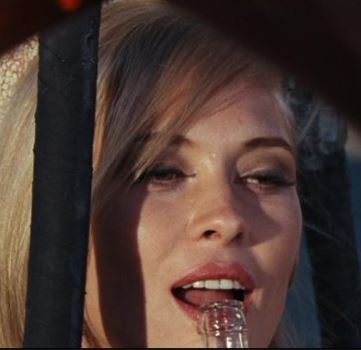 Between her lips just touching the bottle to her half closed eyes. The whole scene screams sex. After he robs the store and they take off she is trying to initiate sex, but Clyde states he is not a “lover” and refuses. He seems to be suffering from a sexual disfunction. His statement and the fact they do not have sex until much later in the film helps portray them as truly in love. After committing a murder, Clyde begs her to go back home before she is linked to him. She refuses. When they do eventually have sex, he is like a teenager wanting the girls approval that he did ok.
Between her lips just touching the bottle to her half closed eyes. The whole scene screams sex. After he robs the store and they take off she is trying to initiate sex, but Clyde states he is not a “lover” and refuses. He seems to be suffering from a sexual disfunction. His statement and the fact they do not have sex until much later in the film helps portray them as truly in love. After committing a murder, Clyde begs her to go back home before she is linked to him. She refuses. When they do eventually have sex, he is like a teenager wanting the girls approval that he did ok. Bonnie and Blanche do not get along but that does not deter Buck and Clyde from staying together. Very much like a family and siblings.
Bonnie and Blanche do not get along but that does not deter Buck and Clyde from staying together. Very much like a family and siblings.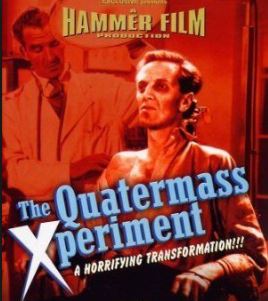



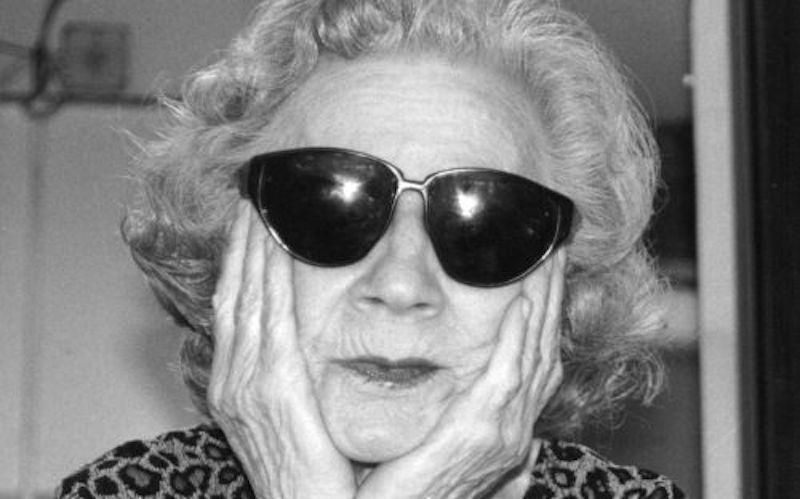



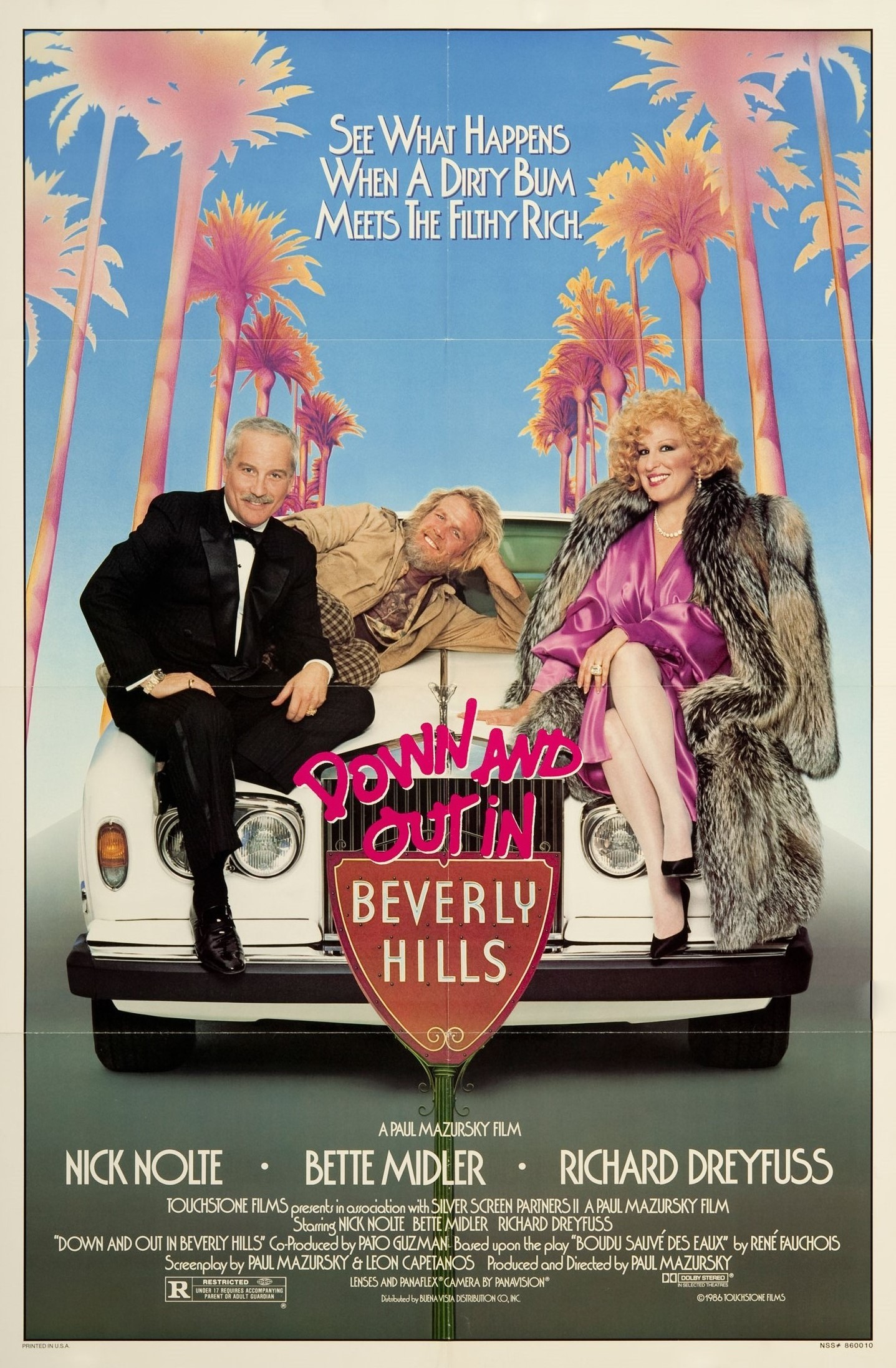
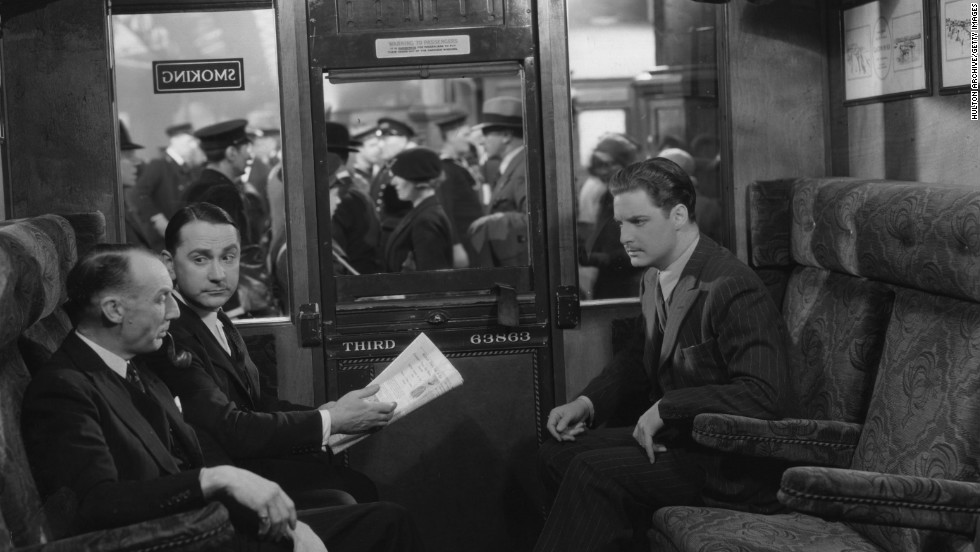 He then hears them talking about a murder and discovers he is now wanted for the woman’s murder. Humor then a jolt. The rest of the movie plays out very similar. I want to point out that Hitchcock also does not use loud music or even special effects to convey his point. The only time I noticed any music was during the chase scenes. When the maid finds the women’s body in his apartment she turns to the camera and screams. But we don’t hear the scream we hear a train whistle.
He then hears them talking about a murder and discovers he is now wanted for the woman’s murder. Humor then a jolt. The rest of the movie plays out very similar. I want to point out that Hitchcock also does not use loud music or even special effects to convey his point. The only time I noticed any music was during the chase scenes. When the maid finds the women’s body in his apartment she turns to the camera and screams. But we don’t hear the scream we hear a train whistle. 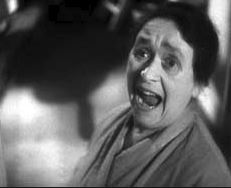 Also, the camera is angled above the maid looking down, which helps increase the moment of terror. When he is at the house with the guy missing a finger, Henny is sitting in front of the window. The angle of the camera is center on him and the guy with no finger tip, yet the conversation is taking place by people standing in front of them. Which gave a sense of stress, almost panic. I kept thinking angle the camera up, who is talking….but for Hitchcock it didn’t matter who was talking, just what our main character was doing.
Also, the camera is angled above the maid looking down, which helps increase the moment of terror. When he is at the house with the guy missing a finger, Henny is sitting in front of the window. The angle of the camera is center on him and the guy with no finger tip, yet the conversation is taking place by people standing in front of them. Which gave a sense of stress, almost panic. I kept thinking angle the camera up, who is talking….but for Hitchcock it didn’t matter who was talking, just what our main character was doing.  Hitchcock was a true master, using camera angles, average conversation, humor, sexual tension, and mystery to weave the story. Hitchcock helped introduce the world to a thrilling yet comedic adventure ride. (I felt the movie was reminiscent of James Bond movies. Makes me wonder if Ian Fleming was a Hitchcock fan?)
Hitchcock was a true master, using camera angles, average conversation, humor, sexual tension, and mystery to weave the story. Hitchcock helped introduce the world to a thrilling yet comedic adventure ride. (I felt the movie was reminiscent of James Bond movies. Makes me wonder if Ian Fleming was a Hitchcock fan?)